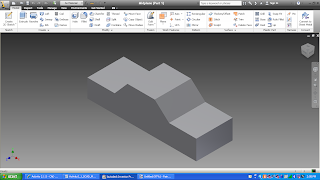1) Provide a breif description of the activity. Who did you work with? What did you build? What challenges did you overcome to succesfully craft your aircraft?
- Our groupmembers were Ian, and Ezequiel; we all collaborated together, to build a balsa-wood airplane. Our Primary problem, that we encountered, was that while gluing, some of the parts were not completely glued in the proper places. As a result, while flying, the plane achieved some starboard (Right) list in the air. To combat this, we re-fixed the rudder's position, and we also placed a (very thin) layer of glue over the wing, giving it more weight, and balancing it. Even still, adding the glue caused for the plane to be dorsal-venterally unbalenced, and the plane would fly up-side-down, and go in the opposite direction.
(COMMING SOON)
3) Post a photo of your finished design.
(COMMING SOON)
4) Describe how you tested your aircraft and tuned its flight characteristics.
- We tested our plane over a period of three days (Block-Day Wednesday, Thursday, and the Friday preceeding the competition). On the first day, we were foccusing on the proper methods of throwing the plane, and wind direction. We found that at first, throwing it softly and with the wind, would give it some movement (Our best flight was 10-15 yards), and the rudder broke. On the second day, we followed the same principles, and we also tested other factors, such as if you should throw it in a gust, and other techniques. During these tests, we found out that the best way to throw it, was to let the propeller spin for about a second, prior to the actual flight of the plane. We sustained breaks on the rudder again, and the wing support. On the third day, we were focussing on the finite techniques on throwing, and checking to see any listing, which there was greatly. During these tests, part of the wing support broke, and we re-inforced the wing support with glue.
5) Describe how well your aircraft flew in our competition. Did you win any events (furthest distance, longest time aloft)? Were you competative in our best decorated flier competition?
- Our Plane didn't do so well in the competition. After the third day of testing, there were a multitude of flaws in our plane, and it became dorso-venterally topheavy. Upon throwing, the plane would do a 180* turn, and fly backwards. As a result, we did not win any distance, or time aloft competitions. Our Group did not decorate our plane.
6) Pick three steps from the PLTW 12 step design process and describe how your team worked through these during the course of this experience.
*NOTE: Our group didn't follow the PLTW Steps in chronological order, but we did use many of them. We also used a sort of "Reverse Engineering" Method*
- Refine: Our Group did extensive testings, to make sure that our plane didn't have any flaws, that would be potentially bad for the flying competition. Our plane also took some damage, and required modifications to the plane.
- Explore Possibilities: Since our group was one of the first groups that finished with construction, we had many oppertunities, in which we could modify and change our plane. We looked at possible ideas that we could do, to modify our plane further; straying away from blueprints, we made the wings movable on the fuselage, allowing for tests at varrying lengths, and many other modifications.
- Identify the Problem/Brainstorming: Our group did a "Hit the Ground Running" method of construction, jumping into it the first day. We knew what we needed, and made a few minor modifications to the blueprints (We added a few sticks above the wings, and made the wings movable on the fuselage), and we kept these in mine while construction; these things could have also lead to our problems while flying.
.png)
.png)
.png)
.png)
.png)
.png)
.png)
.png)
.png)
.png)
.png)
.png)
.png)
.png)
.png)
.png)

